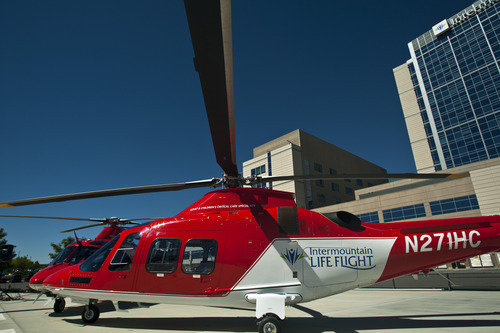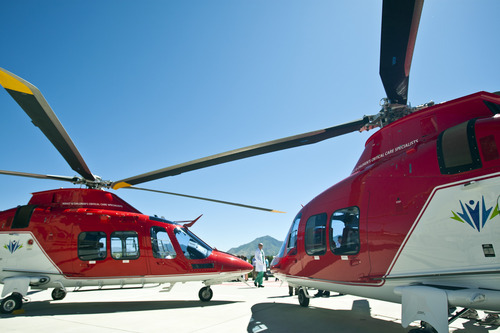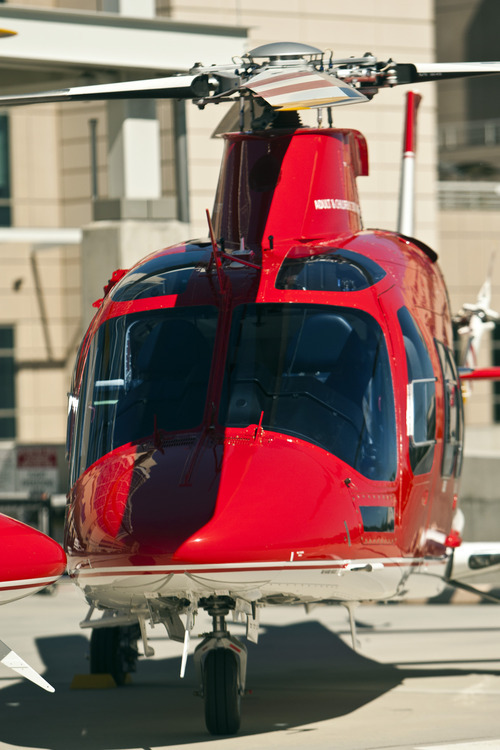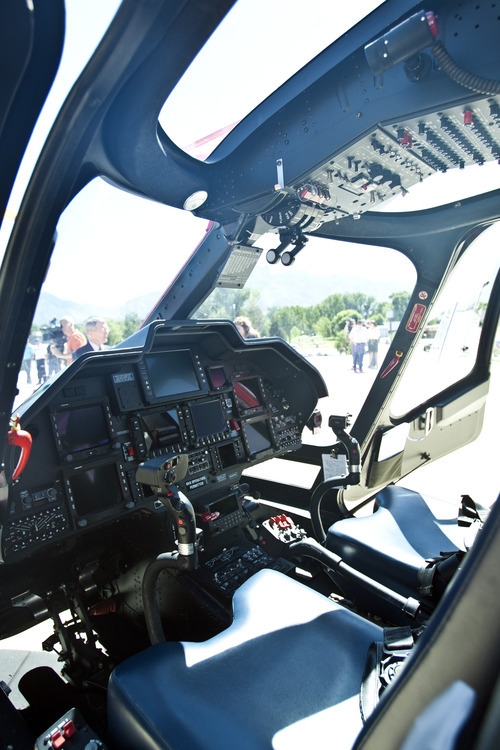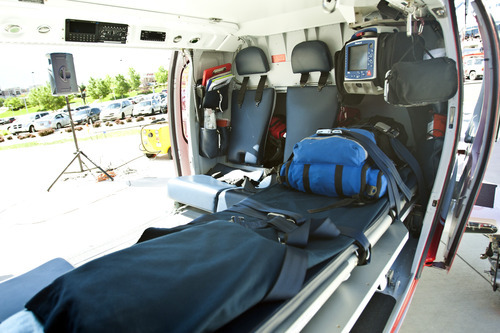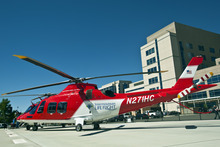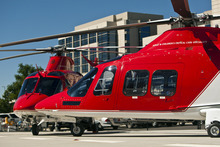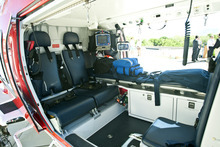This is an archived article that was published on sltrib.com in 2012, and information in the article may be outdated. It is provided only for personal research purposes and may not be reprinted.
After a bullet ricocheted off a steel target and lodged itself into his skull, Mike Tillack rushed to Sanpete Valley Hospital in Mount Pleasant. Doctors there determined Tillack needed to be transported to a bigger hospital. The ambulance ride would take nearly two hours in traffic; Tillack arrived via Life Flight helicopter in 27 minutes.
Fortunately for Tillack, IMC acquired three new Augusta Grand helicopters this spring, one of which raced him to Utah Valley Regional Medical Center in Provo before the bullet fragments pushing against his brain created any irreparable damage.
The Augusta Grands can reach speeds of up to 190 mph in the Intermountain region. They can travel even faster at lower altitudes.
"The [emergency medical responders]were surprised at how quickly we showed up to the scene because [the helicopter crew]responded so quickly," said Jerry Morrison, Life Flight executive director.
The helicopters feature a complete digital cockpit display, twin-engine power, retractable landing gear, a collision avoidance system and "Highway in the Sky" technology that aids pilot navigation.
Tillack, the first patient to ride one of Intermountain Healthcare's newest copters, carries the bullet fragment the crew extracted from his skull to remember just how close he came to death two weeks ago.
At a media event Wednesday, IMC nurse practitioner Bill Duehlmeier explained what physicians call the "golden hour." The first 60 minutes spent dealing with a trauma are key in saving a patient's life.
"Speed matters. Seconds count," Duehlmeier said. "That first 60 minutes are critical."
About a dozen patients have been transported in two of the new helicopters since Tillack's journey June 4, Life Flight spokesman K.D. Simpson said.
The third helicopter has been in use for nearly a year in St. George and already has racked up 300 medical runs.
Andrea Clement, a pediatric nurse who works in the new helicopters, said there's no data yet to determine whether the new vessels will deliver greater results "but we do know the faster they can be the better the chance we have at saving someone."
Morrison said each of these new aircraft cost between $6 million and $8 million. He said Intermountain budgets for the new copters and begins saving as soon as it buys new ones. The average lifespan of a copter is around 15 years, he said.
The Augusta Grand models replace the Augusta 109 K2 models the hospital had used since 1993. The fleet of helicopters also includes Bell 407 helicopters purchased in 2004.
As Tillack sat in the cabin of the Augusta Grand on Tuesday, he smiled at his 5-year-old daughter Stevie and asked, "Would you like to fly in a helicopter someday?"
Stevie nodded her head with excitement.
Tillack looked down at the gurney beside him and responded, "but hopefully not a Life Flight helicopter."


